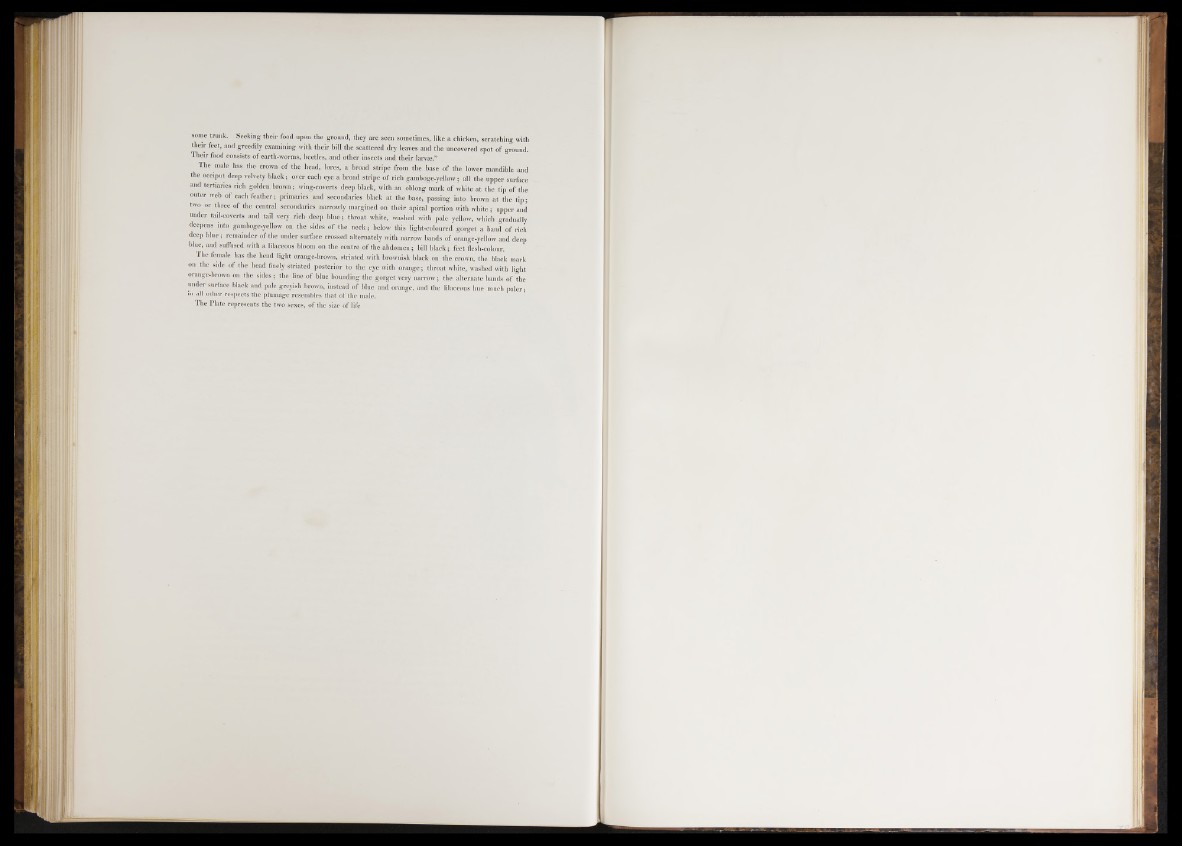
some trunk. Seeking their food upon the ground, they are seen sometimes, like a chicken, scratching with
their feet, and greedily examining with their bill the scattered dry leaves and the uncovered spot of ground.
Their food consists of earth-worms, beetles, and other insects and their larv;e.”
The male has the crown of the head, lores, a broad stripe from the base of the lower mandible and
the occiput deep velvety black; over each eye a hroad stripe of rich gamboge-yellow; all the upper surface
and terttaries rich golden brown; wing-coverts deep black, with an oblong mark o f white at the tip o f the
outer web o f each feather; primaries and secondaries black at the base, passing into brown at the tip ;
two or three of the central secondaries narrowly margined on their apical portion with white 5 upper and
under tail-coverts and tail very rich deep b lu e ; throat white, washed with pale yellow, which gradually
deepens into gamboge-yellow on the sides o f the neck; below this light-coloured gorget a band o f rich
deep blue; remainder of the under surface crossed alternately with narrow bands of orange-yellow and deep
blue, and suffused with a lilaceons bloom on the centre of the abdomen; bill b lack ; feet flesh-colour.
The female has the head light orange-brown, striated with brownish black on the crown, the black mark
on the side of the head flnely striated posterior to the eye with orange; throat white, washed with light
orange-brown on the sides; the line of blue bounding the gorget very narrow; the alternate hands o f the
under surface black and pale greyish brown, instead o f blue and orange, and the Iilaceous hue much paler;
in all other respects the plumage resembles that of the male.
The Plate represents the two sexes, of the size o f life